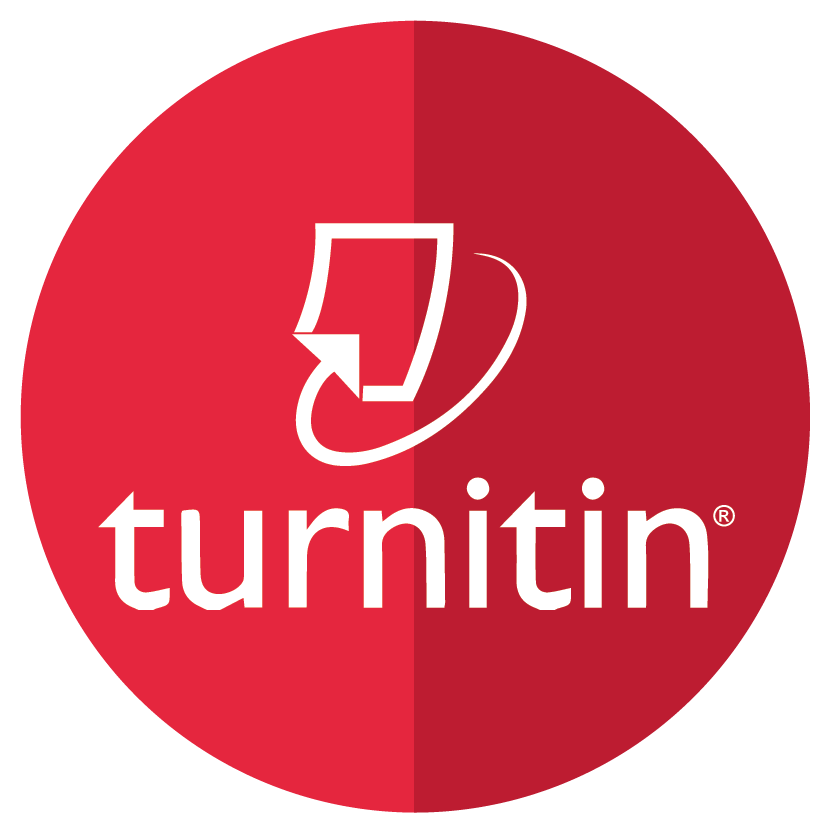SOCIAL ACTORS IN AN INDONESIAN EFL CLASSROOM: A CRITICAL STUDY OF CLASSROOM INTERACTION
Abstract
Full Text:
PDFReferences
Abdullah, F. & Lulita, L. (2018). Social actors in an Intercultural Communication classroom: A discursive lens of intercultural education. Indonesian JELT, 13(1), 31-51.
Abdullah, F. & Tandiana, S.T. (2019). Reframing intercultural communicative competence echoed in the Indonesian EFL learners’ responding texts: A discursive approach. Prosiding Konferensi Linguistik Tahunan Atma Jaya 17 Tingkat Internasional, April 2019 (pp. 157-161). Jakarta: Pusat Kajian Bahasa dan Budaya, Universitas Katolik Indonesia Atma Jaya.
Andriani, A., & Abdullah, F. (2017). Invigorating the EFL students in acquiring new linguistic knowledge: Language learning through projects. Proceedings of the 4th international language and language teaching conference, Nov, 2017, (pp. 1-15). Yogyakarta: English Language Education Study Program, Sanata Dharma University.
Amal Saleh, E., Sajjadi, S. & Yarmohammadi, L. (2006). The representation of social actors in the EFL high school textbooks in Iran. MEXTESOL Journal, 30(1), 9-23.
Austin, J. L. (1962). How to do things with words. Clarendon. Oxford, 2005, 619-650.
Awayed-Bishara, M. (2017). EFL discourse as a cultural practice. Journal of Multicultural Discourses, 1-16.
Dashti, L., & Mehrpour, S. (2017). Representation of Social Actors in J. Krishnamurti and Alan Watts’ Philosophical Speeches: A Critical Discourse Analysis. Journal of Applied Linguistics and Language Research, 4(4), 51-59.
Elam, K. G., & Duckenfield, M. (eds.). (2000). Creating a community of learners: Using the teacher as a facilitative model. Clemson, S.C.: National Dropout Prevention Center.
Elhadj Said, N. (2011). Politeness Strategies in Requests: The Case of Elfhoul Speech Community (Doctoral dissertation).
Fairclough, N. (1989). Language and power. London: Longman.
Hagenauer, G., & Volet, S. (2014). “I don´t think I could, you know, just teach without any emotionâ€: Exploring the nature and origin of university teachers’ emotions. Research Papers in Education, 29(2), 240-262.
Halliday, M.A.K. & Matthiessen, C.M.I.M. (2004). Introduction to functional grammar (3rd edition). London: Arnold.
Karimaghaei, Z. & Kasmani, M. (2013). The representation of social actors in Top Notch 2A and 2B. Asian Journal of Social Sciences and Humanities, 2(1), 27-38.
Knowlton, D. S. (2000). A theoretical framework for the online classroom: a defence and delineation of student-centred pedagogy. New directions for teaching and learning, 2000(84), 5-14.
Lawless, K. (2014). Constructing the ‘other’: construction of Russian identity in the discourse of James Bond films. Journal of Multicultural Discourses, 9(2), 79-97.
Luke, A. (1995). Text and discourse in education: An introduction to critical discourse analysis in M. W. Apple (Ed.), review of research in education 21 (pp. 3-48). Washington, DC: AERA.
Luke, A. (2003). Theory and practice in critical discourse analysis. For: L. Saha (ed) International encyclopedia of the sociology of education, Elsevier Science Ltd. University of Queensland, Australia.
McCroskey, J. C., & Richmond, V. P. (1983). Power in the classroom I: Teacher and student perceptions. Communication Education, 32(2), 175-184.
Moini, M. R. (2016). The Representation of Social Actors in Top-Notch Textbook Series: A critical discourse analysis perspective. International Journal of Foreign Language Teaching and research. 4, 13. Iran.
Morrison, K. A. (2008). Democratic classrooms: Promises and challenges of student voice and choice, part one. Educational Horizons, 50-60.
Rashidi, N. & Rasti, A. (2012). Doing (in) Justice to Iran's Nuke Activities? A Critical Discourse Analysis of News Reports of Four Western Quality Newspapers. American Journal of Linguistics, 1(1), 1-9. DOI: 10.5923/j.linguistics.20120101.0
Richards, J. C. (2005). Interchange Third Edition Intro Student's Book. Cambridge: Cambridge University Press.
Rodgers, C., & Scott, K. (2008). The development of the personal self and professional identity in learning to teach. In M. Cochran-Smith, S. Feiman-Nemser, D. J.
Rogers, R. (2004). A critical discourse analysis of family literacy practices power in and out of print. Mahwah, NJ: Lawrence Erlbaum.
Sadeghi, B. & Maleki, G. (2016). The Representation of Male and Female Social Actors in the ILI English Series. Journal of Language Teaching and Research, 7(2), pp. 307-317. DOI: http://dx.doi.org/10.17507/jltr.0702.09.
Sahragard, R. & Davatgarzadeh, G. (2010). The Representation of Social Actors In Interchange Third Edition Series: A Critical Discourse Analysis. The Journal of Teaching Language Skills (JTLS), 2. Shiraz University: springer.
Sentürk, I., & Oyman, N. (2014). Democratic Classroom Management in Higher Education: A Qualitative Study. Educational Sciences: Theory and Practice, 14(3), 940-945.
Van Dijk, T. A. (1995). Aims of critical discourse analysis. JD. Japanese discourse Vol. 1, 17-27.
Van Dijk, T. A. (2006). Ideology and discourse analysis. Journal of Political Ideologies,11(2), 115-140.
Van Leeuwen, T. (1996). The representation of social actors in discourse. In C. R. Coldas-Coulthard & M. Coulthard (Eds.), Texts and Practices: Readings in critical discourse analysis (pp. 32-70). London: Routledge.
Van Leeuwen, T. (2008). Discourse and practice new tools for critical discourse analysis. Oxford: university press.
Young, R. (1990). A critical theory of education. Habermas and our children's future. New York: Teachers College Press
DOI: https://doi.org/10.37058/tlemc.v4i1.1813
Refbacks
- There are currently no refbacks.
INDEXED BY:
This work is licensed under a Creative Commons Attribution-NonCommercial-ShareAlike 4.0 International License.
![]()
TLEMC (Teaching and Learning English in Multicultural Contexts)
Program Studi Pendidikan Bahasa Inggris
Fakultas Keguruan dan Ilmu Pendidikan
Universitas Siliwangi
Jl. Siliwangi No. 24 Kota Tasikmalaya - 46115
email: tlemc@unsil.ac.id





